|
|
Updated as per Sphingidae (Lepidoptera) de Venezuela, Compilado por: María Esperanza Chacín; December 2009
Updated as per CATE (description; Mexico, Costa Rica, Panama, Colombia, Venezuela, Ecuador, Brazil); May 20, 2011
Updated as per personal communication with Ben Trott (Playa del Carmen, Quintana Roo, Mexico); April 21, 2012
|
Enyo taedium
(Schaus 1890)
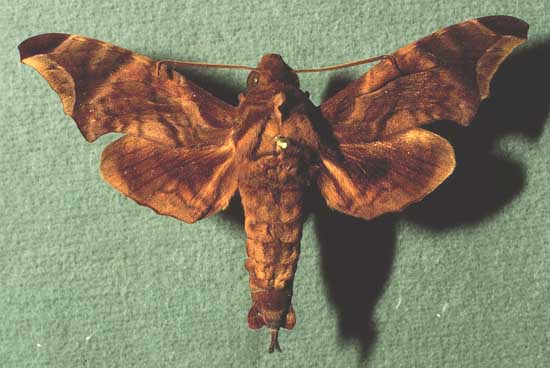
Enyo taedium male courtesy of Dan Janzen.
This site has been created by
Bill Oehlke at oehlkew@islandtelecom.com
Comments, suggestions and/or additional information are welcomed by Bill.
TAXONOMY:
Family: Sphingidae, Latreille, 1802
Subfamily: Macroglossinae, Harris, 1839
Tribe: Dilophonotini, Burmeister, 1878
Genus: Enyo Hubner, [1819] ...........
Species: taedium Schaus, 1890
|
MIDI MUSIC
.....It's a Wonderful World.....
copyright C. Odenkirk
ON.OFF
<bgsound src="world.mid" LOOP=FOREVER>
|
DISTRIBUTION:
Enyo taedium (wingspan approx. 57 mm)
flies in
Mexico: Jalapa; and
Belize: Cayo; south to at least
Costa Rica and Panama. It has also been taken in
Colombia;
northern Venezuela: Aragua;
Ecuador; and
Brazil.
"One of the four species of Enyo with a forewing androconial organ in the males.Forewing shape and venation as in Enyo gorgon but: androconial
organ narrower, costa not as convex; crossveins m1-m2 and m2-m3 both straight and not displaced; lower angle of discal cell obtuse and more proximal than the upper
angle, crossvein m2-m3 about half the length of m3-cu1a; M2 curved at base.
"Forewing upperside similar to Enyo gorgon but ground colour essentially unicolorous, lacking the division into a paler anterior half and darker posterior half and
the triangular dark brown postmedian patch.
"Female Forewing upperside almost identical to Enyo gorgon, antemedian line rather more convex on 1A+2A." CATE
FLIGHT TIMES:
Enyo taedium flies in May in Costa Rica and is one of the less common species
found there.
ECLOSION:
Adults eclose from pupae formed in loose cocoons in shallow underground burrows.

Enyo taedium female courtesy of John Vriesi.
SCENTING AND MATING:
Females call in the males with a pheromone released from a gland at the tip of the
abdomen.
EGGS, LARVAE, PUPAE:
Larvae probably feed on Vitus tiliifolia
and other members of the
Vitaceae family: Vitis, Cissus rhombifolia,
Ampelopsis. Tetracera volubilis, Curatella americana, Tetracera hydrophila
and Doliocarpus multiflorus
of the Dilleniaceae family likely also serves as a host, as does Ludwigia of the Onagraceae.
The "horn" is very long in early instars and head is
relatively large. As the larva matures, the body develops rapidly, leaving the head relatively small and the "horn"
relatively short.
The pupa is dark and smooth with a sharp cremaster.
I am not sure of the identification of the following larva and pupa as Enyo cavifer cavifer. I do not see the rather prominent
dorso-lateral line on any of the images on Dan Janzen's website for Enyo cavifer cavifer in Costa Rica. Perhaps these images are of
Enyo taedium? Enyo taedium would be my (Bill Oehlke's) first guess.
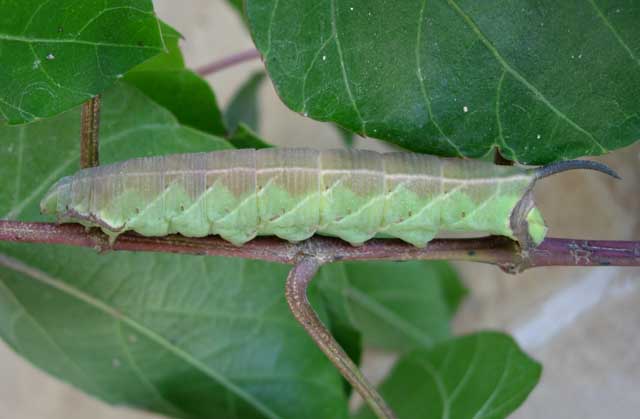
Enyo taedium fifth instar, prepupation, Belize,
courtesy of Ben Trott.
As I was processing the images of the larva above, I was struck by the resemblance in shape and colour of the anal horn to the juncture
of host plant tendrils to vine stems.
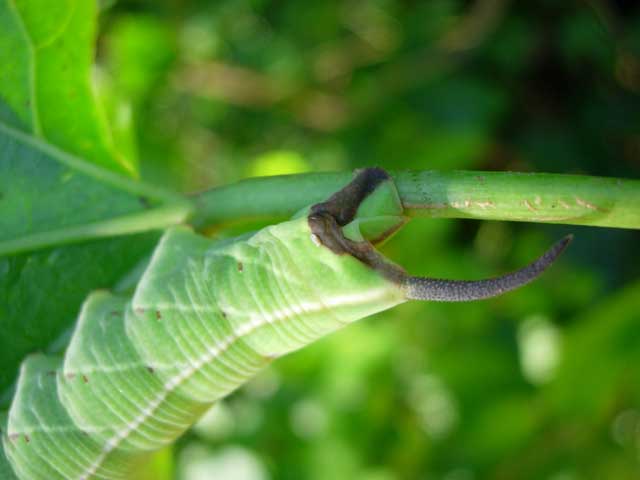
Enyo taedium fifth instar anal horn, prepupation, Belize,
courtesy of Ben Trott.
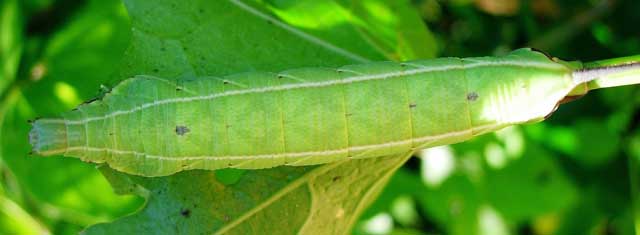
Enyo taedium fifth instar anal horn, prepupation, Belize,
courtesy of Ben Trott.
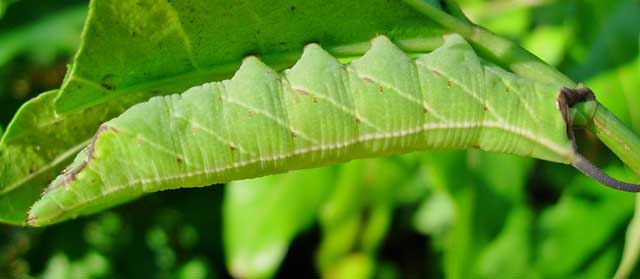
Enyo taedium fifth instar anal horn, prepupation, Belize,
courtesy of Ben Trott.
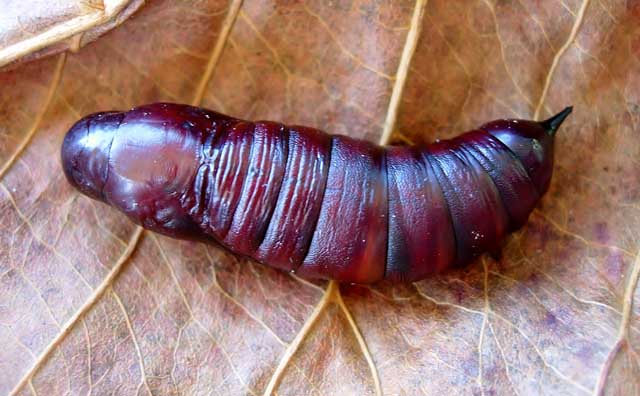
Enyo taedium pupa, Belize, courtesy of Ben Trott.
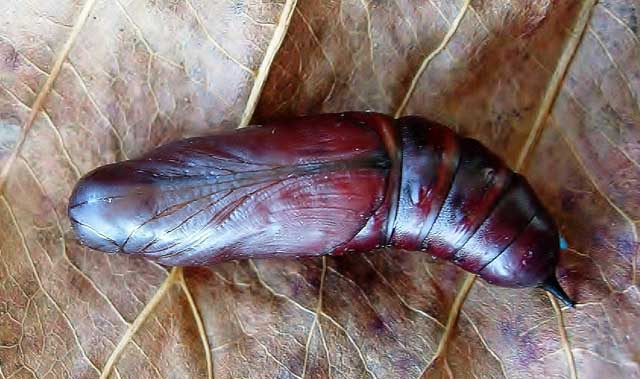
Enyo taedium pupa, Belize, courtesy of Ben Trott.
Return to Sphingidae Index
Return to Dilophonotini Tribe







